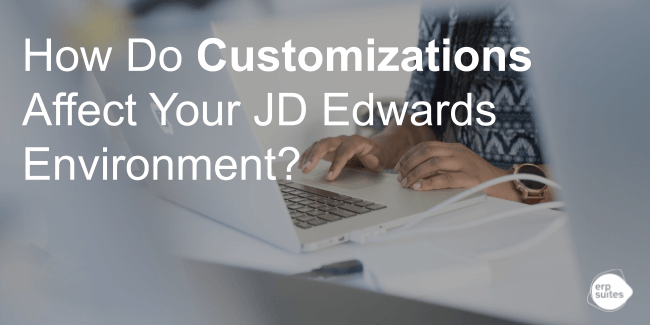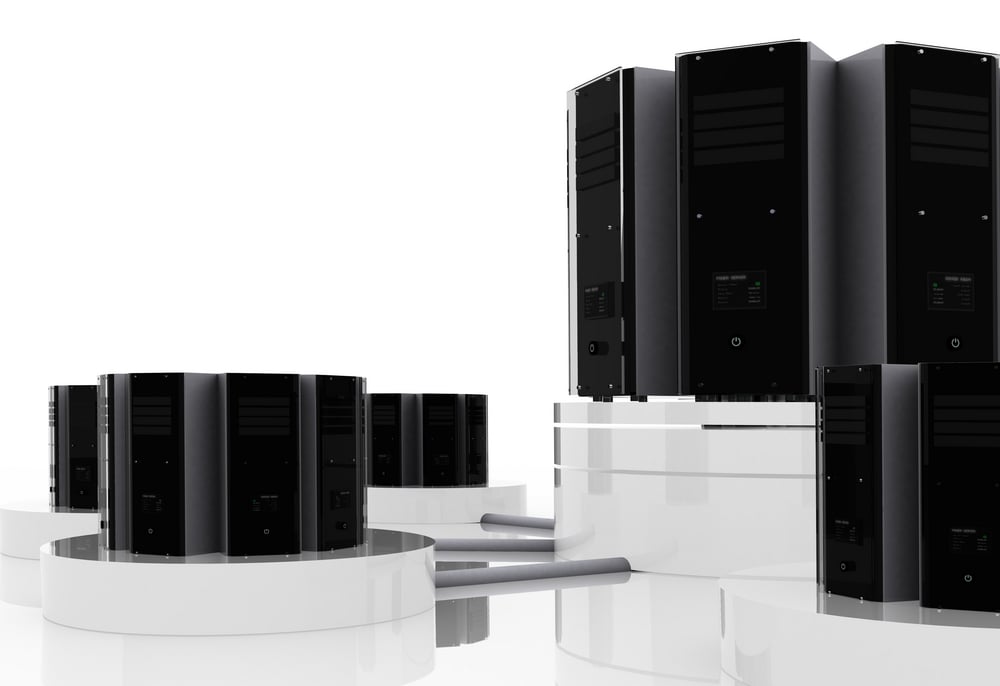Four Signs You Need a Transformational Upgrade
November 7th, 2024
4 min read
.png?width=960&height=540&name=Blog%20Images%20(71).png)
How’s business these days? Perhaps your company has benefited from the fact that U.S. manufacturing construction spending has tripled since 2020. Or maybe you’ve experienced modest growth, but have an eye on the future. Maybe you’re just looking to stay competitive in an ever-narrowing marketplace.
Does all of this mean it’s time for a change? The answer is yes, possibly - especially if you’re experiencing a disconnect in your daily operations.
Did that spending increase on construction also come with supply chain delays and underutilized data? If you’re looking to stay competitive, is it because other companies are offering services you’re not?
But what kind of change are we talking about? A routine JD Edwards upgrade? Or something bigger, something more holistic? It could be time for a transformational upgrade. How will you know?
To help you get more specific, there are four primary signs you’ll observe when it’s time to make a transformational upgrade:
- Your process is outdated
- You’re going through a merger and/or acquisition
- You’re not using the advanced functionalities available in JD Edwards
- You’re stuck with excess manual work.
Some of these might be more subtle than others, but as someone who pays obsessive attention to your business, you’ll know when they’re happening. We’re just pointing out what they are so you can continue to do your thing.
An Outdated Process Slows Everything Down
One of the most common triggers for a transformational upgrade is realizing your current business processes and needs aren’t aligned. Your ERP system and associated processes feel cumbersome and inefficient. There’s a disconnect between the way you do business, and the reality of your day-to-day operations. Maybe inefficiencies in your warehouse are leading to lost revenue because product sits on a dock instead of moving through the supply chain to your customer’s front step. This is a clear sign that change should be on the horizon.
A transformational upgrade in this instance would revamp how your company does its work. This type of upgrade goes beyond a simple technical refresh and takes a deep dive into every aspect of your operational processes. No stone is left unturned – to get the most out of a transformational upgrade, you’ll need to examine workflows, identify areas for improvement, and eventually reconfigure your ERP system to bring those streamlined and efficient processes to life.
To get started, assemble a cross-functional team within your company. This group will be tasked with mapping out your existing business processes in detail. Identify pain points, bottlenecks, and opportunities for automation or optimization. Are there any blind spots in your business? Can you take a 30,000 foot look at your whole enterprise? Asking these tough questions with an internal team will help your external partners narrow in on what they need to do.
Take Advantage of the M&A Upheaval
You know the saying, “In for a dime, in for a dollar?” That’s what we mean when we say a merger and/or acquisition or a divestiture is the perfect time for a transformational upgrade. You’ve acquired a new business unit, expanded into new markets, or simply outgrown the way you’ve been operating for the past decade. You might be struggling to keep up with increasing transaction volumes, new product lines, or expanded geographic reach.
As your business grows and evolves, your ERP system needs to be able to scale and adapt accordingly. This type of upgrade often involves not just updating the technical components of your ERP, but also re-evaluating your underlying data structures, integration points, and reporting capabilities. By taking a holistic view of your technology ecosystem, you can ensure that your upgraded ERP system is equipped to handle the demands of your growing business.
Start by conducting a thorough assessment of your current ERP system's performance, scalability, and integration capabilities. Identify any areas where the system is struggling to keep up, and work with your vendor or a consulting partner to develop a roadmap to address these challenges. This could involve migrating to a cloud-based ERP solution, implementing new integration tools, or overhauling your data management practices.
Are You Using JD Edwards To Its Fullest Potential?
Think back to when you selected your ERP system. You chose JD Edwards from all the popular ERPs on the market for a reason: Its features aligned with your business. But now your business has grown. Is your JDE keeping up? The functionalities and capabilities of your ERP system can become outdated, what with new releases and new processes constantly in development.
Maybe your current solution doesn’t support new sales channels. Maybe you can’t automate key processes, saving your company time and resources. Or maybe you aren’t optimizing your working capital.
In this instance, a transformational upgrade can address the problem by not just updating the underlying technology, but also re-evaluating your business processes and workflows. If you can use your current ERP more efficiently to take advantage of the latest features and capabilities, you’ll save more valuable resources down the line, too.
Start by conducting a thorough assessment of your current ERP system's functionality. What can it do or not do that you’ve always wanted it to be able to? Identify gaps or limitations that are holding your business back. Work with your vendor or a consulting partner to understand the latest product roadmap. They can help identify the features and capabilities to achieve your business goals. Then, develop a plan to migrate to the upgraded system, ensuring that your business processes are optimized to take full advantage of the new functionality.
Automation is Your Friend
The number of tasks that can be automated in everyday life are growing exponentially. From automatically adjusting your smart thermostat based on your schedule and preferences to sending payroll for processing and backing up files, automation can free up lots of time and resources.
Many repetitive manual tasks on the job can be outsourced to automation. Your JD Edwards ERP system has the functionality within it to automate data entry, generate reports, and manage inventory, among many others. As you know, excess manual work not only reduces productivity and increases the risk of errors, it can also lead to employee frustration and burnout. So why not redirect your human capital to more fitting endeavors and let the robots handle the other stuff?
Your JDE ERP is primed in many ways for automation. You can create automated workflows for processes like accounts payable (AP) and accounts receivable (AR), or employee onboarding. This also creates a streamlined process template for your employees. You can set up automatic alerts to notify users of certain events or conditions.
This can help safeguard your capital assets from unnecessary wear and tear. You can integrate your JDE with other systems, like a SalesForce CRM, to automate data transfer and synchronization. This will allow you to better utilize your existing data, enabling you to make more informed decisions about your business.
Once you have a better grasp on the ways you can use automation through JDE, you can better assess any remaining needs you’ll have in a transformational upgrade.
Focus On Your Target with the Right Upgrade
At the end of the day, you know you have specific goals you want to achieve. This is especially true if you’re struggling with disconnects between your systems and goals. It’s time for a change, but are you curious what other ways exist to address your gaps? Check out how a technical refresh helps your JDE perform better.
Leyla Shokoohe is an award-winning journalist with over a decade of experience, specializing in workplace and journalistic storytelling and marketing. As content manager at ERP Suites, she writes articles that help customers understand every step of their individual ERP journey.


.png?width=650&height=325&name=Blog%20Images%202_1%20(2).png)
.png?width=650&height=325&name=Blog%20Images%202_1%20(1).png)

.png?width=960&height=540&name=Blog%20Images%20(98).png)
.png?width=960&height=540&name=Blog%20Images%20(88).png)
.png?width=960&height=540&name=Blog%20Images%20(86).png)
.png?width=960&height=540&name=Blog%20Images%20(85).png)
.png?width=960&height=540&name=Blog%20Images%20(83).png)
.png?width=960&height=540&name=Blog%20Images%20(75).png)
.png?width=960&height=540&name=Blog%20Images%20(3).png)










